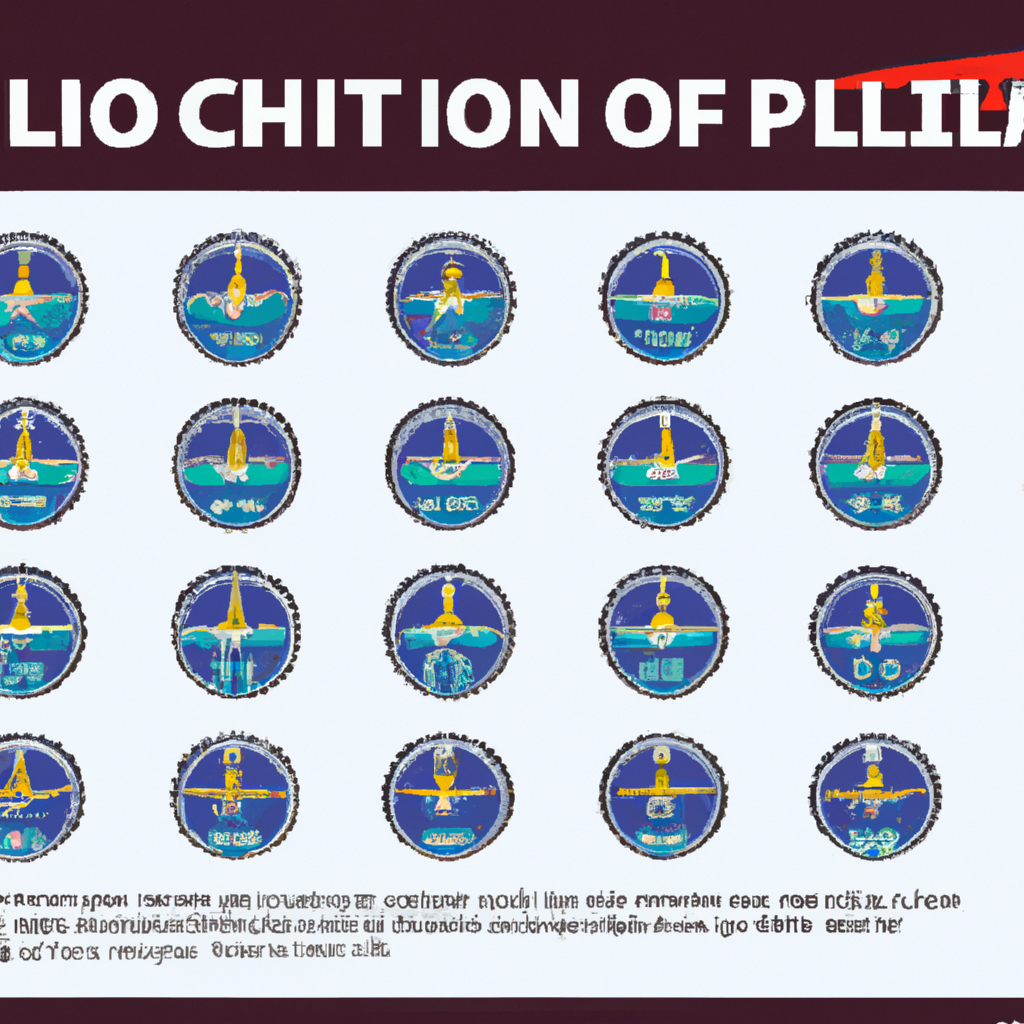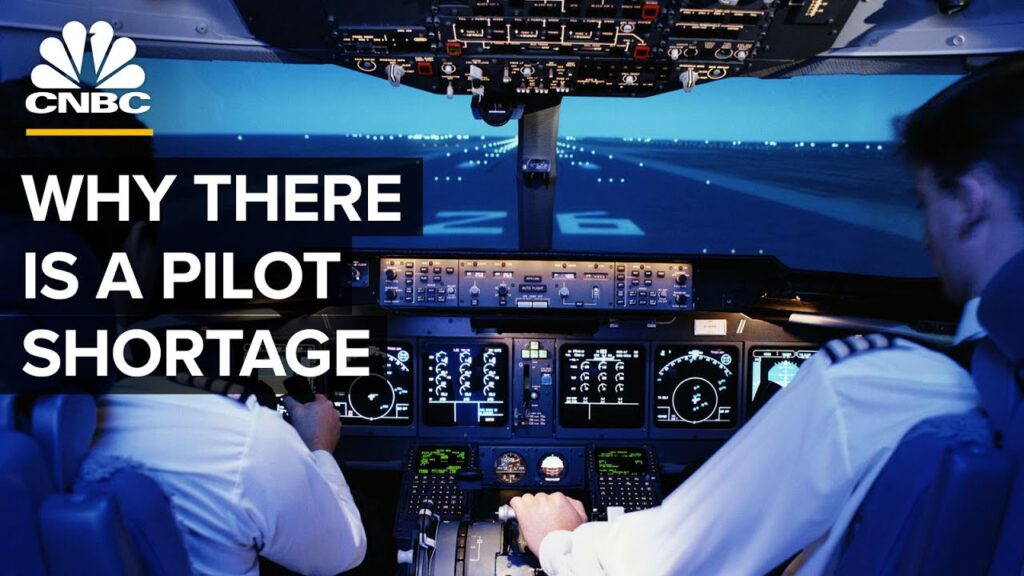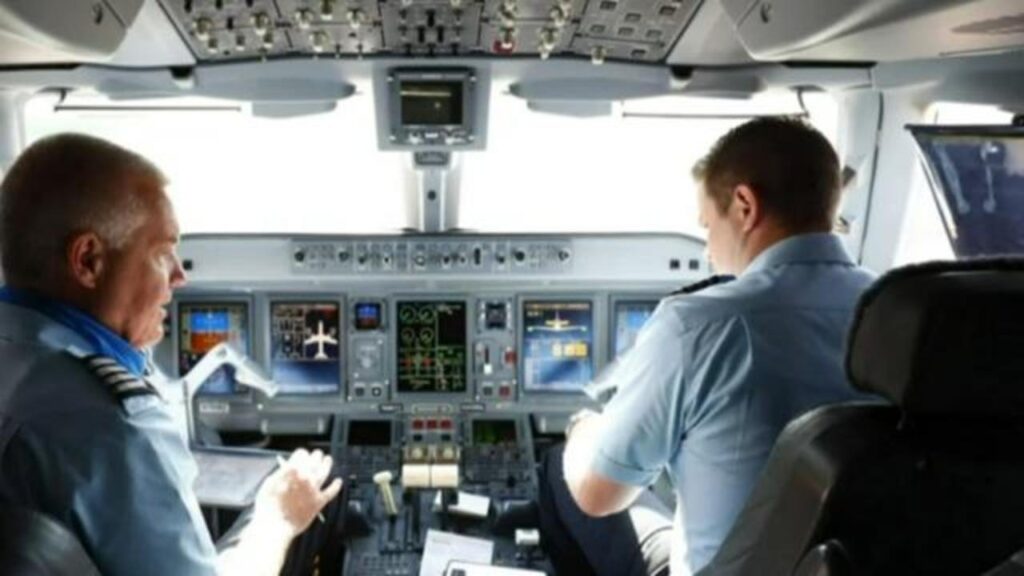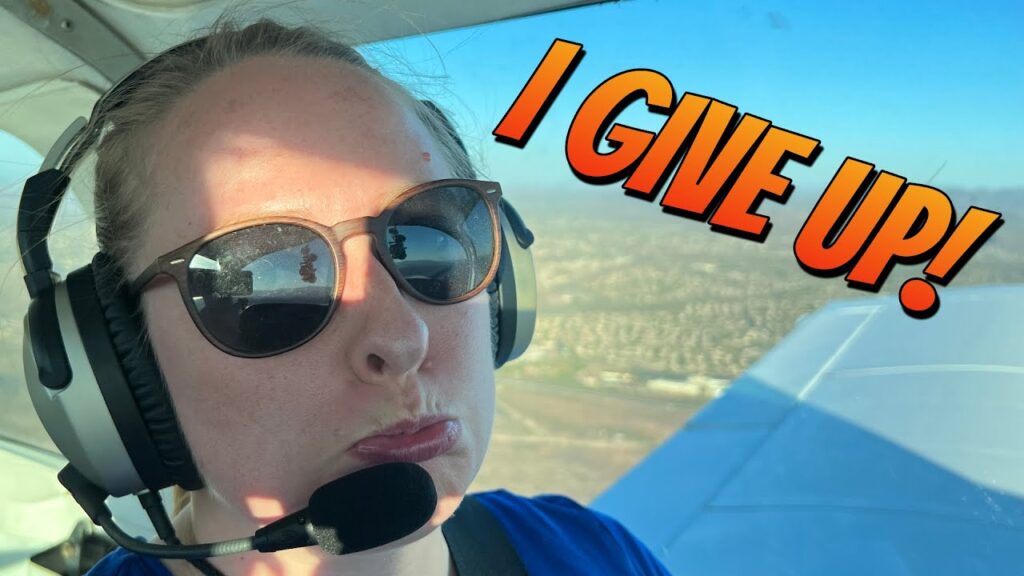Have you ever dreamed of taking to the skies as a pilot, but aren’t sure where to begin? In the vast world of aviation, there are various pilot licenses to choose from, each with its own set of requirements and complexities. If you’re looking to kickstart your flying career and wondering which license is the easiest to obtain, we’ve got you covered. In this article, we’ll explore the different pilot licenses available and provide you with insights into the simplest one to attain, helping you take the first exciting step towards your aviation aspirations.
Private Pilot License (PPL)
The Private Pilot License (PPL) is a widely recognized and popular pilot license for individuals looking to fly for recreational purposes or personal transportation. To obtain a PPL, you must meet certain minimum requirements. These requirements include being at least 17 years old, having a minimum of 40 hours of flight time (including 20 hours of flight instruction and 10 hours of solo flight), and passing a written exam and a practical test.
The training duration for a PPL can vary depending on individual circumstances. It typically takes an average of 3-6 months to complete the necessary flight training and meet the required flight hours. However, the duration can be shorter or longer, depending on factors such as weather conditions, availability of aircraft, and personal commitment to training.
During PPL training, you will acquire a diverse range of skills and knowledge. These include learning how to effectively control and maneuver an aircraft, understanding aviation regulations and procedures, navigation and flight planning, as well as a strong foundation in aviation theory and principles. Additionally, you will gain experience in various flight conditions, such as day and night flying, cross-country flights, and emergency procedures.
To obtain a PPL, you will need to obtain a medical certificate issued by an authorized aviation medical examiner. This certificate ensures that you are physically fit and meet the required medical standards to safely operate an aircraft. The medical examination typically includes a general physical examination, vision and hearing tests, and evaluation of any medical conditions or medications that may affect your ability to fly.
To obtain a PPL, you will need to pass a written knowledge exam and a practical flight test. The written exam will assess your understanding of aviation regulations, navigation, meteorology, and other essential topics. The practical test involves demonstrating your ability to safely operate the aircraft, perform various maneuvers, and handle emergency situations. It is conducted by a designated Federal Aviation Administration (FAA) examiner.
Sport Pilot License (SPL)
The Sport Pilot License (SPL) offers a simplified path for individuals who wish to fly for recreational purposes and have certain limitations in terms of aircraft size and operating conditions. The minimum requirements for obtaining an SPL include being at least 17 years old, having a minimum of 20 hours of flight time (including 15 hours of flight instruction and 5 hours of solo flight), and passing a written exam and a practical test.
Compared to the PPL, the training duration for an SPL is typically shorter. It can range from 8-12 weeks, depending on various factors such as the individual’s availability for training and the flight school’s schedule. The reduced flight hour requirements contribute to the shorter duration of training compared to other licenses.
The skills and knowledge acquired during SPL training are similar to those of a PPL. You will learn basic aircraft control, navigation, and emergency procedures. However, due to the limitations of the SPL, you will focus on flying Light Sport Aircraft (LSA) during your training. LSAs are smaller and have certain restrictions on maximum weight and speed.
Similar to the PPL, an SPL requires a medical certificate. However, the medical requirements for an SPL are less stringent than those for a PPL. You will need to hold a valid driver’s license or a third-class medical certificate issued by an aviation medical examiner.
To obtain an SPL, you will need to pass a written exam and a practical test. The written exam will cover topics such as aviation regulations, airspace, weather, and navigation. The practical test will evaluate your ability to safely operate an LSA, perform basic maneuvers, and handle emergency situations.

Recreational Pilot License (RPL)
The Recreational Pilot License (RPL) is another option for individuals seeking a pilot license for recreational purposes. The RPL is similar to the PPL but with reduced requirements. To obtain an RPL, you must be at least 17 years old, have a minimum of 30 hours of flight time (including 15 hours of flight instruction and 5 hours of solo flight), and pass a written exam and a practical test.
The training duration for an RPL can vary depending on factors such as individual progress and availability for training. On average, it takes around 2-4 months to complete the necessary flight training and meet the required flight hours.
During RPL training, you will acquire skills and knowledge similar to those required for a PPL. These include aircraft control, navigation, flight planning, and emergency procedures. However, the focus of the training will be on recreational flying, rather than extensive cross-country flights or advanced maneuvers.
Similar to other licenses, an RPL requires a medical certificate. For an RPL, you will need to obtain a Class 2 medical certificate, which involves a more comprehensive medical evaluation by an aviation medical examiner.
To obtain an RPL, you must pass a written exam and a practical test. The written exam covers topics such as aviation regulations, meteorology, navigation, and aircraft systems. The practical test evaluates your ability to safely operate the aircraft, perform basic maneuvers, and respond to emergency situations.
Ultralight Pilot License
If you are looking for a relatively easy and affordable pilot license, the Ultralight Pilot License (ULPL) might be the perfect choice. Ultralights are lightweight aircraft that have a very simple design and are typically limited to one or two occupants. The requirements for obtaining an ULPL are minimal, making it an accessible option for many aviation enthusiasts.
The minimum requirements for an ULPL include being at least 16 years old (14 years old for solo flight), obtaining a minimum of 10 hours of flight time (including 2 hours of flight instruction and 2 hours of solo flight), and passing a written exam and a practical test.
The training duration for an ULPL can be relatively short, ranging from a few weeks to a couple of months, depending on individual progress and availability for training. The reduced flight hour requirements compared to other licenses contribute to the shorter training duration.
During ULPL training, you will learn basic aircraft control, takeoffs, landings, and emergency procedures. The focus will be on mastering the essential skills needed to safely operate an ultralight aircraft in basic flying conditions.
Unlike other licenses, an ULPL does not require a medical certificate. However, you must be in good health and have no conditions that could impair your ability to safely operate the aircraft.
To obtain an ULPL, you must pass a written exam and a practical test. The written exam will cover topics such as aviation regulations, basic aerodynamics, and flight safety. The practical test evaluates your ability to safely operate the ultralight aircraft, perform basic maneuvers, and respond to emergency situations.

Balloon Pilot License
For those who prefer a different kind of flying experience, obtaining a Balloon Pilot License (BPL) can be a thrilling option. Balloons provide a unique and serene way to navigate the skies, offering breathtaking views and a peaceful flying experience.
To obtain a BPL, the minimum requirements include being at least 16 years old (14 years old for solo flight), obtaining a minimum of 10 hours of flight time (including 4 hours of flight instruction and 2 hours of solo flight), and passing a written exam and a practical test.
The training duration for a BPL varies depending on various factors such as weather conditions and individual progress. It typically takes around 2-4 months to complete the necessary flight training and meet the required flight hours.
During BPL training, you will learn how to handle and control a balloon, navigate using wind currents, and perform various balloon maneuvers. Additionally, you will gain a solid understanding of meteorology, airspace regulations, and emergency procedures specific to balloon operations.
Similar to other licenses, a BPL requires a medical certificate. However, the medical requirements for a BPL are less stringent compared to other licenses. You will need to hold a valid driver’s license or a third-class medical certificate issued by an aviation medical examiner.
To obtain a BPL, you must pass a written exam and a practical test. The written exam covers topics such as balloon systems, meteorology, airspace regulations, and emergency procedures. The practical test evaluates your ability to safely operate the balloon, perform balloon maneuvers, and respond to emergency situations.
Glider Pilot License
For those who are captivated by the beauty of silent soaring flights, obtaining a Glider Pilot License (GPL) opens up the world of gliding and allows you to experience the thrill of flying without an engine. Gliders are aircraft designed to fly using the natural currents of air, making it a unique and exhilarating form of aviation.
Obtaining a GPL requires meeting certain minimum requirements. These include being at least 16 years old (14 years old for solo flight), obtaining a minimum of 10 hours of flight time (including 20 flights and 2 hours of solo flight), and completing a minimum of 40 training launches.
The training duration for a GPL can vary depending on individual progress and availability for training. It typically takes an average of 3-6 months to complete the necessary flight training and meet the requirements.
During GPL training, you will learn essential glider handling skills, such as takeoffs, landings, and soaring techniques. Additionally, you will gain knowledge in aerodynamics, meteorology, and emergency procedures relevant to glider operations.
Similar to other licenses, a GPL requires a medical certificate. However, the medical requirements for a GPL are less stringent than those for powered aircraft licenses. You will need to hold a valid driver’s license or a third-class medical certificate issued by an aviation medical examiner.
To obtain a GPL, you must pass a written exam and a practical test. The written exam covers topics such as glider systems, aerodynamics, meteorology, airspace regulations, and emergency procedures. The practical test evaluates your ability to safely operate the glider, perform various maneuvers, and respond to emergency situations.
Gyroplane Pilot License
If you are looking for a unique and exciting type of aircraft, a Gyroplane Pilot License (GPL) might be the right choice for you. Gyroplanes, also known as autogyros, are versatile aircraft that combine features of both helicopters and airplanes, offering an exhilarating flying experience.
To obtain a GPL, the minimum requirements include being at least 17 years old, obtaining a minimum of 40 hours of flight time (including 25 hours of flight instruction and 10 hours of solo flight), and passing a written exam and a practical test.
The training duration for a GPL can vary depending on individual progress and availability for training. It typically takes an average of 3-6 months to complete the necessary flight training and meet the required flight hours.
During GPL training, you will learn how to control and maneuver a gyroplane, perform takeoffs and landings, and handle emergency situations specific to gyroplane operations. You will also gain knowledge in aerodynamics, meteorology, and airspace regulations.
Similar to other licenses, a GPL requires a medical certificate. You will need to obtain a third-class medical certificate issued by an aviation medical examiner.
To obtain a GPL, you must pass a written exam and a practical test. The written exam will assess your understanding of gyroplane systems, aerodynamics, meteorology, airspace regulations, and emergency procedures. The practical test evaluates your ability to safely operate the gyroplane, perform various maneuvers, and respond to emergency situations.
Powered Parachute Pilot License
For those who enjoy a more leisurely and scenic flying experience, obtaining a Powered Parachute Pilot License (PPPL) can provide an exciting avenue for exploration. Powered parachutes are lightweight and easy-to-operate aircraft that offer a unique perspective from the sky.
To obtain a PPPL, the minimum requirements include being at least 17 years old, obtaining a minimum of 12 hours of flight time (including 10 hours of flight instruction and 2 hours of solo flight), and passing a written exam and a practical test.
The training duration for a PPPL is relatively short, usually ranging from 1-3 months. However, the duration may vary depending on individual progress and availability for training.
During PPPL training, you will learn how to operate and control a powered parachute, perform takeoffs and landings, and fly in various weather conditions. Additionally, you will gain knowledge in aerodynamics, meteorology, and airspace regulations specific to powered parachutes.
Similar to other licenses, a PPPL requires a medical certificate. You will need to obtain a third-class medical certificate issued by an aviation medical examiner.
To obtain a PPPL, you must pass a written exam and a practical test. The written exam will assess your understanding of powered parachute systems, aerodynamics, meteorology, airspace regulations, and emergency procedures. The practical test evaluates your ability to safely operate the powered parachute, perform various maneuvers, and respond to emergency situations.
Hot Air Balloon Pilot License
Hot air ballooning offers a truly unique and peaceful way to experience flight. If you have a passion for adventure and want to explore the skies in a slow and serene manner, obtaining a Hot Air Balloon Pilot License (HABPL) might be the perfect choice for you.
To obtain a HABPL, the minimum requirements include being at least 17 years old, obtaining a minimum of 10 hours of flight time (including 2 hours of flight instruction and 2 hours of solo flight), and passing a written exam and a practical test.
The training duration for a HABPL can vary depending on individual progress and availability for training. It typically takes around 2-4 months to complete the necessary flight training and meet the required flight hours.
During HABPL training, you will learn how to control and maneuver a hot air balloon, navigate using wind currents, and perform various balloon maneuvers. Additionally, you will gain knowledge in meteorology, airspace regulations, and emergency procedures specific to hot air ballooning.
Similar to other licenses, a HABPL requires a medical certificate. However, the medical requirements for a HABPL are less stringent than those for powered aircraft licenses. You will need to hold a valid driver’s license or a third-class medical certificate issued by an aviation medical examiner.
To obtain a HABPL, you must pass a written exam and a practical test. The written exam covers topics such as balloon systems, meteorology, airspace regulations, and emergency procedures. The practical test evaluates your ability to safely operate the hot air balloon, perform various maneuvers, and respond to emergency situations.
Conclusion
Whether you have a passion for flying airplanes, bounding through the skies in a hot air balloon, or gracefully soaring in a glider, there are various pilot licenses available to suit your interests and aspirations. While the easiest pilot license to obtain may depend on individual circumstances and preferences, licenses like the Ultralight Pilot License and the Powered Parachute Pilot License often require fewer flight hours and less stringent medical requirements. However, each license offers its own unique experiences and challenges. Ultimately, the choice of which pilot license to pursue should be based on your aviation goals, interests, and commitment to training. So, take to the skies and embark on a thrilling adventure as a licensed pilot!






